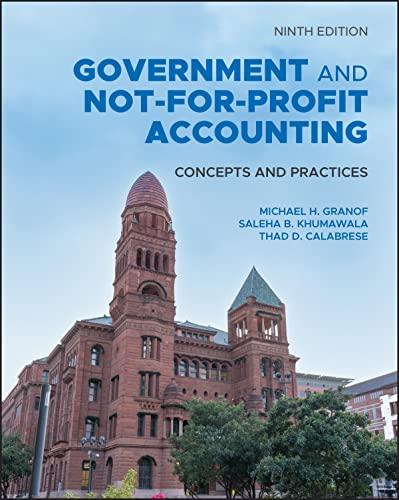Question
Accounting for Foreign Currency Transactions Accounting for foreign currency transactions involves recording and reporting financial transactions denominated in a currency other than the entity's functional
Accounting for Foreign Currency Transactions
Accounting for foreign currency transactions involves recording and reporting financial transactions denominated in a currency other than the entity's functional currency. Here's a brief overview:
Functional Currency: Each entity operates using a functional currency, which is the primary currency of the economic environment in which it operates. Transactions are initially recorded in the functional currency.
Foreign Currency Transactions: When a transaction occurs in a currency different from the functional currency, it is necessary to convert the transaction amount into the functional currency using the exchange rate prevailing at the transaction date.
Recognition at the Transaction Date: Foreign currency transactions are initially recorded at the transaction date using the spot exchange rate, which is the rate at which currencies can be exchanged on that date.
Subsequent Measurement: Monetary assets and liabilities denominated in foreign currency are remeasured at each reporting date using the spot exchange rate at that date. Exchange gains or losses arising from remeasurement are recognized in the income statement.
Non-monetary Items: Non-monetary items, such as property, plant, and equipment, are translated into the functional currency using historical exchange rates. Exchange differences on non-monetary items are generally recognized in other comprehensive income.
Hedging Transactions: Companies may use hedging strategies to manage foreign currency risk. Hedging instruments, such as forward contracts or options, are accounted for in accordance with applicable accounting standards.
Objective Type Question:
When a foreign currency transaction occurs, which exchange rate is used to initially record the transaction amount in the functional currency?
A) Historical exchange rate B) Spot exchange rate C) Forward exchange rate D) Weighted average exchange rate
Step by Step Solution
There are 3 Steps involved in it
Step: 1

Get Instant Access to Expert-Tailored Solutions
See step-by-step solutions with expert insights and AI powered tools for academic success
Step: 2

Step: 3

Ace Your Homework with AI
Get the answers you need in no time with our AI-driven, step-by-step assistance
Get Started


